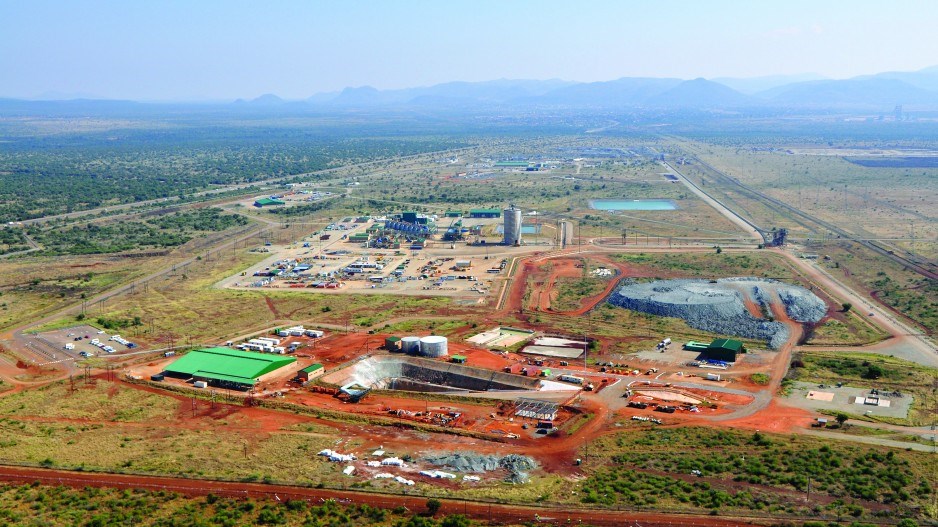Later this year, when a large new platinum mine goes into production in South Africa, the Vancouver mining tag team of Michael Jones and Frank Hallam will have pulled off a minor miracle: building a $500 million mine during one of the worst resource bear markets in decades.
“We’ve completed over $300 million [in financing] in the worst market in the world,” said Jones, CEO of Vancouver’s Platinum Group Metals (TSX:PTM; NYSE:PLG).
Not only did Platinum Group raise more than $300 million between January 2013 and 2015, the new mine it’s building is in South Africa, where labour strife and a lack of electricity has rattled the country’s mining sector.
To cap off its achievement, while the company was developing the new Western Bushveld Joint Venture (WBJV) mine, it discovered a brand-new deposit that promises to be even richer – the Waterberg.
With $3 million from Japanese investors, the company undertook a drill program that hit pay dirt right away. The company says the deposit is rich (estimated at 29 million ounces), shallow and at least 13 kilometres long.
“We haven’t found the end of it yet and it’s 29 million ounces and still going,” Jones said.
The company recently raised $20 million from the Japan Oil, Gas and Metals National Corp. to take the Waterberg project through the pre-feasibility stage.
Meanwhile, 1,900 workers are on site getting the new WBJV underground mine ready to go into production.
When it starts producing in the fourth quarter of this year, it will employ 2,400 workers and will produce 275,000 ounces per year of platinum (64%), palladium (27%), rhodium (5%) and gold (4%.)
Platinum Group, founded in 2000, owns 83% of the mine, with a who’s who of institutional investors including J.P. Morgan and Franklin Templeton holding the balance.
The WBJV has not suffered the kind of labour unrest that has shut other South African mines down for months at a time.
“We haven’t lost a blast or a shift to labour in three years,” Jones said. “We’ve been very diligent in hiring people from the local communities right in the area where the mine is, and we’ve kept that at 20% to 30%. The company also rewards miners who meet their targets with up to a 30% pay bonus.”
Jones and Hallam have a solid track record when it co mes to building new mines. They co-founded MAG Silver Corp. (TSX:MAG), which is building a new silver mine in Mexico, and West Timmins Mining, which merged with Lake Shore Gold Corp. (TSX:LSG), now a producing gold mining company. Over his career, six of the discoveries Jones has been involved in have become operating mines.
Although Jones can take some of the credit for the South African platinum projects, he said the fundamentals of the WBJV and Waterberg deposits tend to sell themselves to savvy investors.
The deposits are rich, thick and shallow. Whereas other mines require mining at depths of 1,000 to 2,000 metres, Jones said the Waterberg deposit is sitting at 140 metres from the surface, meaning it can be accessed with decline ramps instead of vertical shafts.
“This is what gives it its extreme competitive advantage,” he said.
“There were enormous challenges, both in the debt market and the equity market. We were just very fortunate that, because of the strategic nature of our discoveries and the enormous discovery that we made at Waterberg, this attracted some of the strongest and most stalwart investors in the world.”
South Africa produces roughly 64% of the world’s platinum and palladium, both of which are used in catalytic converters, hydrogen fuel cells, electronics and a range of industrial products.
There are only three minable bulk platinum deposits in the world, Jones said, and all are clustered in what is called the north limb of the Bushveld in South Africa, which is one of the most mineral-rich regions in the world.
Another Vancouver company, Ivanhoe Mines Ltd. (TSX:IVN), owns one of the deposits, called Platreef. Both Platinum Group and Ivanhoe have raised significant funding from Japanese investors.
Japan is the world’s third-largest producer of automobiles, all of which need catalytic converters, so platinum is a commodity hotly sought after by Japanese trading houses.
Ivanhoe has raised US$300 million from a Japanese consortium to finance the sinking of the first shaft at its Platreef project, which, at 433,000 ounces per year and a capital cost of $1.2 billion, is even bigger than the WBJV.
Platinum Group’s Waterberg project would be even bigger yet. Whereas the WBJV’s proven and probable resources are estimated at 4.7 million ounces, Waterberg has a resource estimate of 29 million ounces and has an estimated potential production of 655,000 ounces per year.
“So it’s a lot bigger than the mine that we’re building,” Jones said.
Despite a demand for platinum that has been growing at 3% per year, platinum prices have fallen from a 52-week high of US$1,500 to $US1,100 per ounce.
Jones said platinum prices have pretty much been tracking gold prices, which he said is “completely illogical” because the markets for gold and platinum-palladium are totally different.
Platinum is not the only thing that appears to be underpriced. At $0.52 per share, Platinum Group itself is undervalued, according to Goldman Sachs, which recently buy-rated Platinum Group Metals stock at $1.50 per share.




